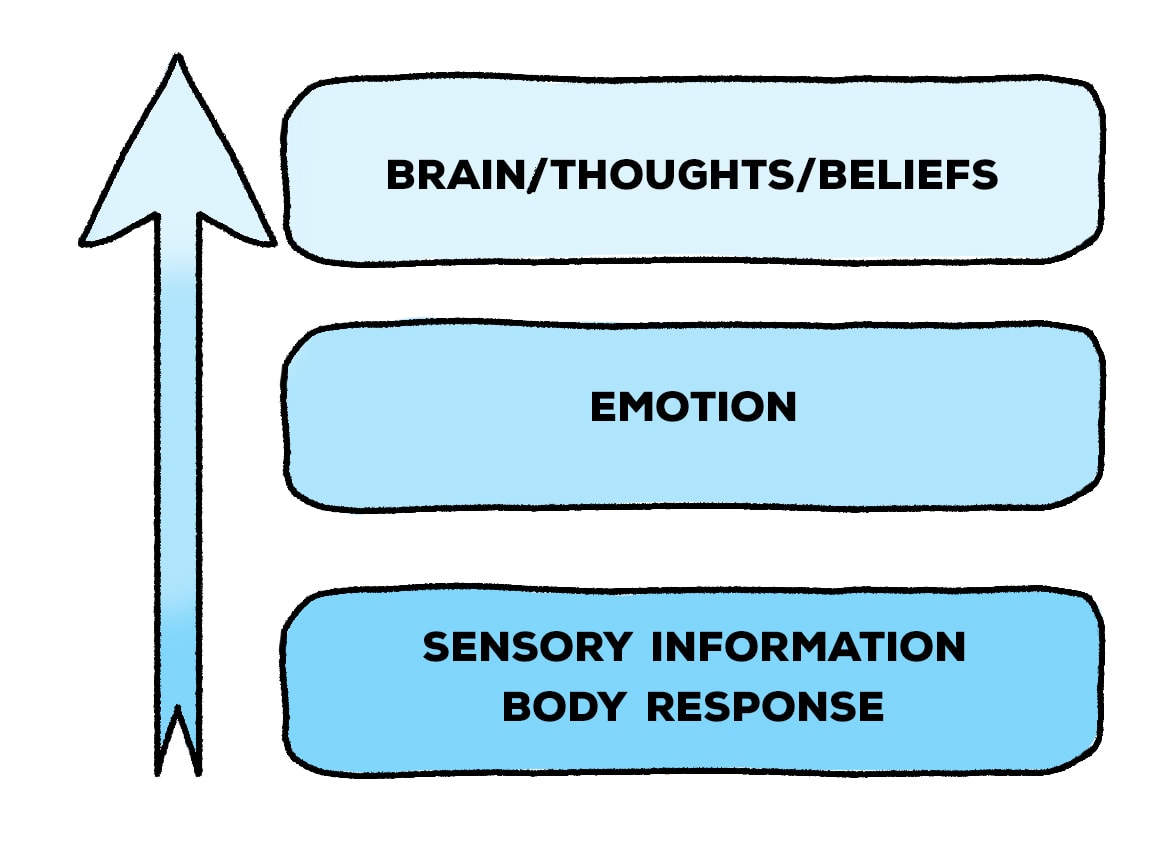Bottom-up processing is a type of information processing that involves stimuli are understood or interpreted beginning with the smallest detail before moving on to more complicated concepts. This is distinct from top-down processing, which is based on forming an overall impression and seeking evidence to support the notion. For example, someone who is visual processing a city street may first form an overall impression that the street is bustling, noisy, and chaotic. To confirm this hypothesis, they might then search for specific signs of this, like pedestrians navigating through crowds or traffic noise emanating from nearby vehicles.

Bottom-up processing is more data-driven, analytical and has been extensively studied in connection with cognitive tasks like memory and perception. However, it also has the potential to play a crucial role in other areas of our lives, including the process of making decisions or in creative pursuits like art or design. When used strategically and appropriately in the right way, bottom-up processing can lead to better problem solving and greater insights into complicated situations. Thus, despite its somewhat negative connotations in academic circles bottom-up processes are extremely useful for understanding both the world around us and our own inner workings.
The brain’s intricate functions are the basis of every thought and action. The functions that take place within this complex organ play an important influence on everything from our brain’s memory and intelligence to our mood and behavior. Bottom-up processing is one the main mechanisms that influence brain functioning. This describes how information gets processed by individual neurons or nerve cells and then via interconnected neural pathways which ultimately affect higher cognitive functions such as perception and attention. The process has been proven to be significant in affecting memory and learning. However, it could also prove beneficial in the treatment of conditions such as schizophrenia or Alzheimer’s. It is possible to unravel some of these mysteries by understanding the brain’s processes starting from the bottom. This will allow us to create new and powerful tools to improve healthcare and neuroscience.
Bottom-up processing is the way our brain processes information. Bottom-down processing is more focused on integrating prior information and beliefs into the process of learning. Bottom-up processing is based on the input of raw data. Bottom-up processing is beneficial for all learners. It is focused on the distinct elements of learning from basic vocabulary and sounds to more advanced concepts and ideas.
Bottom-up processing comes with a distinct advantage: it allows us to take a step back and examine each part of information we are exposed to. This allows us to remain interested and excited to master new concepts, enhance existing ones, or spot possible areas for improvement. This method also assists us to understand how the different parts of information connect through logical chains or networks. Engaging in bottom-up processes can ultimately help us to become better learners as well as more effective communicators.
For more information, click Practicalpie